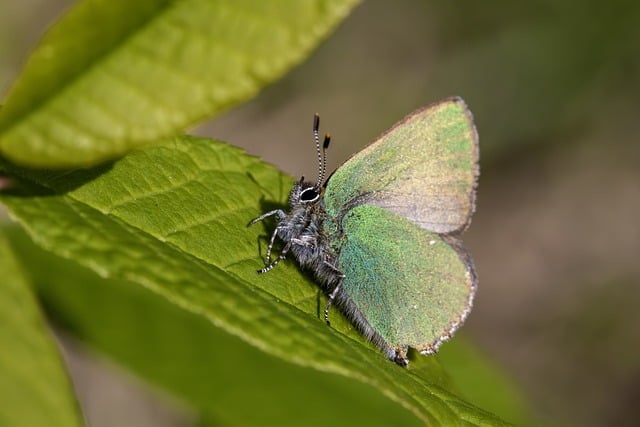“The butterfly’s wings are fragile, yet they carry it far and wide, a testament to resilience.” – Anonymous
The meaning of a Green Butterfly is intricate to context and what you may believe. In this article, we will cover from spiritual and symbolic meanings to scientific insights and research, giving you a deep understandingof not only their meanings but of the green butterfly itself.
Spiritual and Symbolic Meanings
“Butterflies show us that even the smallest beings can make the world a more beautiful place.” – Anonymous
Spiritual Connection and Divine Connection
The green butterfly, majorly, is seen as a symbol of a strong spiritual connection and divine guidance. It represents that someone has a deep connection to nature and will bring themselves spiritual growth and healing. In many cultures, spotting a green butterfly is considered a sign of guidance from a higher power.
Transformation and Rebirth
Green butterflies embody transformation and rebirth. They signify renewal and the ongoing process of change, and this symbolism encourages individuals to embrace said transformation.
Emotional and Psychological Symbolism
The green butterfly symbolizes many aspects of life like balance, harmony, calm positivity; it brings encouragement, hope, joy, love, generosity, and kindness. It is also associated with abundance, success, wealth, and prosperity.
Green Butterfly Species and Characteristics
“The butterfly is a symbol of life’s fleeting beauty, urging us to savor every moment.” – Anonymous
Notable Species: Emerald Peacock Swallowtail, Tailed Jay, Obrina Olivewing, Green Hairstreak
Several notable green butterfly species stand out for their colors and distinctive features. The Emerald Peacock Swallowtail, Tailed Jay, Obrina Olivewing, and Green Hairstreak are prime examples of such features. These butterflies are given character to because of their striking forewings, diverse wingspans, and exceptional color vision.
Emerald Peacock Swallowtail (Papilio palinurus)
The Emerald Peacock Swallowtail (scientifically known as Papilio palinurus) is renowned for its striking green and black wings with an iridescent sheen. This butterfly is native to Southeast Asia and inhabits tropical rainforests. The green coloration is a result of structural coloration, where microscopic scales reflect light to create a green look. The wingspan of this butterfly ranges from 8 to 10 centimeters, they are known for their powerful flight and are often seen flying around flowering plants, on which they feed.
Tailed Jay (Graphium agamemnon)
The Tailed Jay, Graphium agamemnon, is another green butterfly species found in South and Southeast Asia, as well as Australia. It is recognizable by its bright green spots on a dark background and the distinctive tail-like extensions on its hindwings. The wingspan of the Tailed Jay ranges from 8 to 10 centimeters. This butterfly prefers habitats such as tropical rainforests and gardens.
Obrina Olivewing (Nessaea obrinus)
The Obrina Olivewing, Nessaea obrinus, is native to the tropical regions of Central and South America. This butterfly is unique for its vibrant green wings with blue highlights. The wingspan ranges from 5 to 6 centimeters. The Obrina Olivewing inhabits rainforests (usually) and is often seen near rivers and streams. The larvae feed on plants from the Rubiaceae family. The coloration of the Obrina Olivewing is due to both pigment and structural coloration, which creates a shimmering effect.
Green Hairstreak (Callophrys rubi)
The Green Hairstreak, scientifically known as Callophrys rubi, is a small butterfly in the Lycaenidae family. It has a wingspan of 26-30 millimeters and features dull brown upper wings with bright green undersides, which are structurally colored. This species is adaptable and has a wide range of host plants, including Vaccinium, Betula, and Rubus. Green Hairstreaks habitats are chalk downland, heathland, and woodland clearings, across Europe, North Africa, Russia, and parts of Asia.
Cultural Interpretations
“Butterflies are tiny miracles of nature, transforming from the mundane to the extraordinary.” – Anonymous
Greek Mythology
In Greek mythology, butterflies are often associated with the soul.
Middle Ages
During the Middle Ages, butterflies, including green ones, were seen as symbols of the human soul.
Native American Culture
Native American tribes often see the green butterfly as a symbol of nature and spiritual guidance.
African and Egyptian Mythology
In African and Egyptian cultures, the green butterfly is linked to fertility, hope, and renewal.
Green Butterfly in Popular Culture
“The butterfly’s metamorphosis is a reminder that our struggles can lead to great beauty.” – Anonymous
Representation in Europe and America
In Europe and America, green butterflies are celebrated in art, literature, and media.
Role in Art, Literature, and Media
Green butterflies have inspired numerous works of art and literature because of their depiction as symbols of transformation, hope, and spiritual growth.
Green Butterfly Encounters and Their Meanings
“Butterflies are like floating pieces of art, each one a masterpiece of nature.” – Anonymous
Spiritual Meaning of Seeing a Green Butterfly
Seeing a green butterfly is often interpreted as a sign of personal power and spiritual guidance. It symbolizes growth, freshness, and elegance.
Meaning of a Green Butterfly Inside the House
When a green butterfly enters a house, it is seen as a sign of good luck, prosperity, and harmony.
Environmental and Conservation Perspectives
“Butterflies teach us that we are never too small to make a big impact.” – Anonymous
Impact of Climate Change on Green Butterfly Populations
Climate change is a giant threat to butterfly populations, including green butterflies. Rising temperatures and habitat loss affect their migration patterns and survival rates.
Importance of Conservation Efforts
Preserving host plants like stinging nettle, false nettle, and various flowering plants can lead to the conversation of these butterflies.
Role of Host Plants
Host plants like stinging nettle and false nettle provide essential nutrients during the larval stage, while flowering plants offer nectar for adult butterflies.
Scientific Insights and Research
“The butterfly’s wings are a canvas of nature’s artistry, painted with the hues of the rainbow.” – Anonymous
Scientific Names and Classifications
Green butterflies have respective scientific classifications. Research into their genetic makeup and evolutionary history has helped in understanding these butterflies.
Adaptation to Environmental Changes
Green butterflies have stunning adaptability to environmental changes. Research on these butterflies about their adaptation informs conservation strategies and efforts to mitigate the impact of climate change.
Conclusion
Green butterflies are more than just beautiful creatures; they are symbols of spiritual connection, transformation, and renewal. Understanding their cultural significance and the threats they face highlights the importance of conservation efforts. By protecting these delicate insects and their habitats, we can preserve their beauty and the profound meanings they hold for generations to come.
“Butterflies remind us that life is a series of changes, each one a step towards something beautiful.” – Anonymous
References
- Spiritual texts and cultural studies
- Scientific research on butterfly behaviors and conservation
- Historical and mythological sources on butterflies in various cultures

